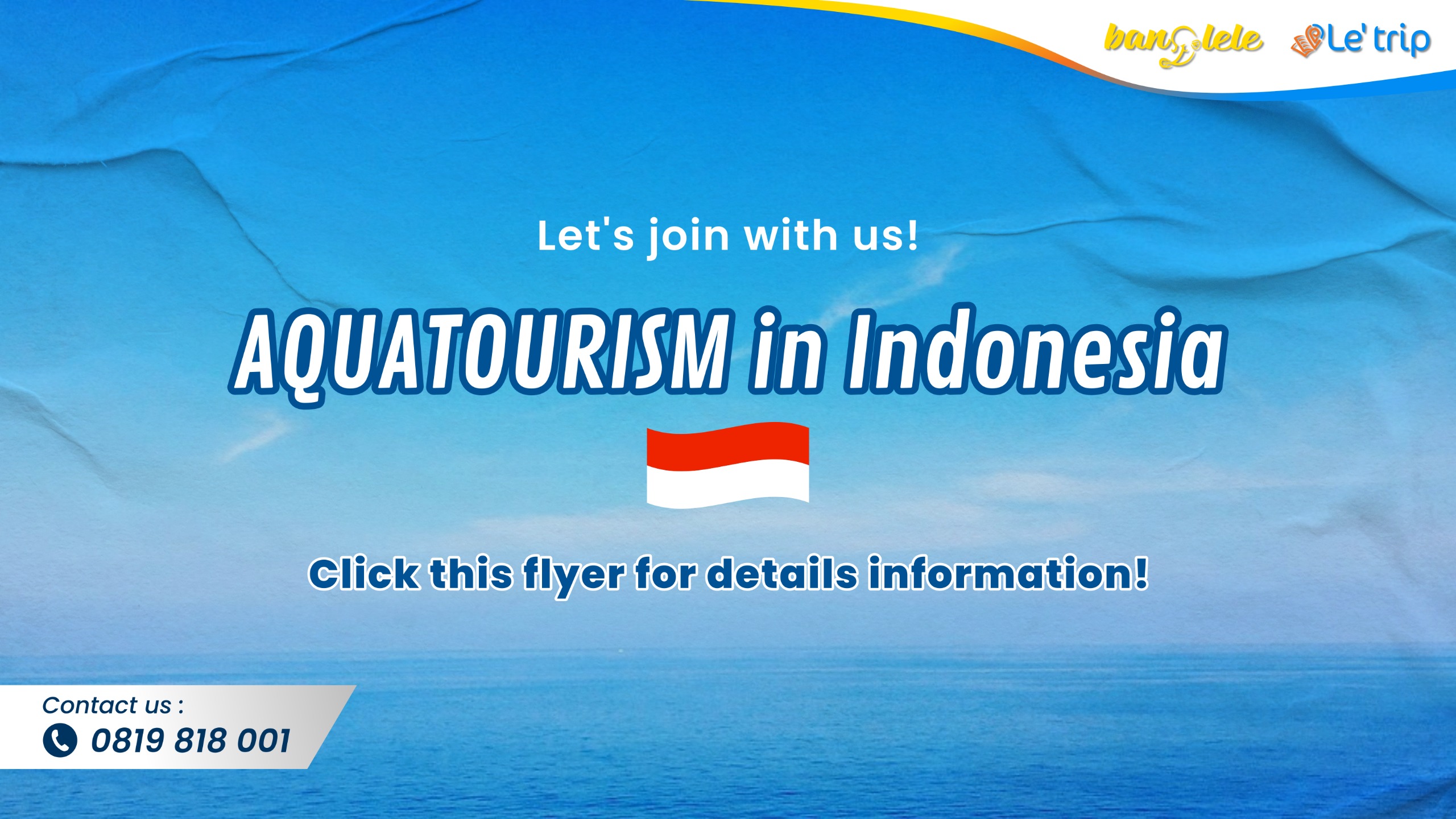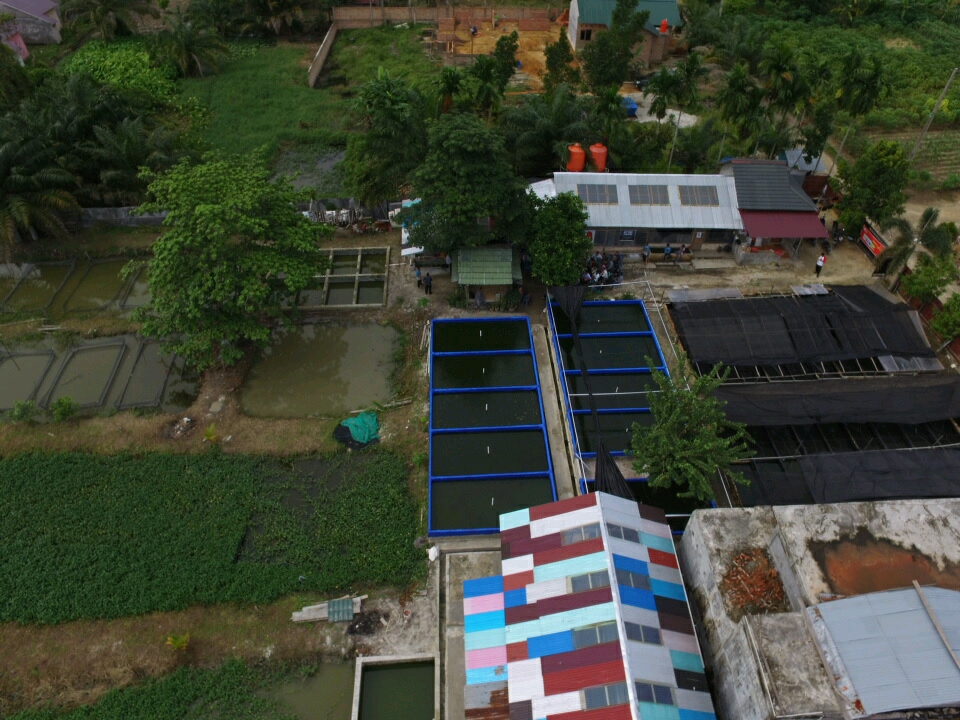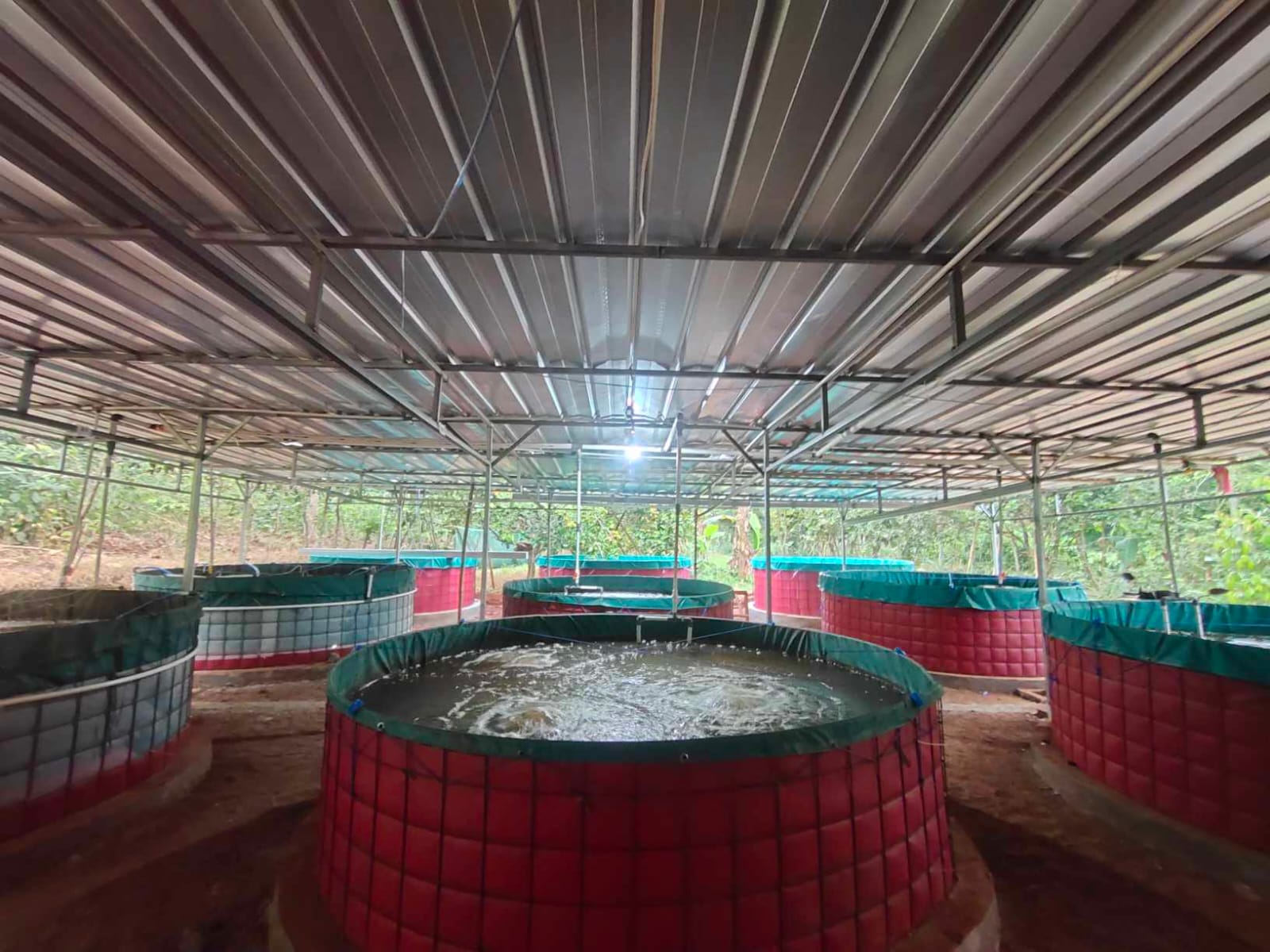Explore the potential of the vannamei shrimp business in Pamanukan; shrimp cultivation collaboration through Banglele Indonesia


Image Source : banglele.co.id
Pamanukan, a sub-district located in Subang Regency, West Java Province, Indonesia, stands out as a potential center for the development of vannamei shrimp cultivation ponds. Located at the intersection of the main national road, namely the Pantura Route, and the provincial road connecting the North Coast region with Bandung, Pamanukan offers extraordinary access for fishing industry players. With its tropical geographical conditions, Pamanukan has an average annual rainfall of 2,000 mm and an average temperature of 27°C, thus providing optimal support for the growth of vannamei shrimp, an important factor that strengthens its potential as a successful vannamei shrimp cultivation center.
Uncle also benefits from the extensive technical rice fields reaching 4,987 hectares, providing substantial land to be developed as vannamei shrimp cultivation ponds. Apart from that, water quality that is suitable for white shrimp cultivation is a determining factor in the success of ponds in this region. With the combination of these factors, Pamanukan has a solid foundation to become a center of excellence in the vannamei shrimp farming industry in West Java.
Based on a survey conducted by the Banglele Indonesia Team, the following are the results and SWOT analysis as well as strategies that can be implemented to face challenges and maximize the potential for developing vannamei shrimp cultivation ponds in Pamanukan:
SWOT analysis
Strength
Pamanukan, a sub-district in Subang Regency, West Java Province, Indonesia, presents promising potential for the development of vannamei shrimp cultivation ponds. The success of this region as a center for white shrimp cultivation can be achieved through a number of advantages it has. First, its strategic location with good and easy-to-reach road access makes it easier to distribute pond products and strengthens connectivity with main markets.
Second, complete public facilities and being located near busy centers provide the infrastructure support needed to support vannamei shrimp farming business activities. In addition, a safe and supportive social environment creates positive working conditions and contributes to business sustainability. Finally, relatively good water quality is a vital foundation for optimal growth of vannamei shrimp, providing a strong basis for the potential success of vannamei shrimp cultivation ponds in Pamanukan.
Weakness
Although Pamanukan offers attractive potential for the development of vannamei shrimp cultivation ponds, there are several challenges that need to be overcome. First, its proximity to a river makes this area vulnerable to flood risk. This condition raises concerns about the environmental stability of ponds and requires preventive measures to reduce the impacts that may arise due to flooding.
Furthermore, the pond environment in Pamanukan experiences poor hygienic conditions, which can affect the health of vannamei shrimp and the quality of the final product. Improvements in waste management and pond hygiene are key to overcoming these challenges. Apart from that, the relatively large size of pond land is also a challenge, because it can make effective management and supervision difficult. By developing a careful management strategy, the size of the pond can be optimized to increase overall efficiency and productivity.
Opportunity
To increase the potential and sustainability of vannamei shrimp cultivation ponds in Pamanukan, a number of proactive strategies can be implemented. First of all, building flood control embankments is an important step to reduce the risk of flooding which can be detrimental to ponds. In this way, the stability of the pond environment can be maintained, and productivity can be increased significantly.
Furthermore, optimizing pond size is a key factor in efficient resource management and utilization. Adjusting the size of the farm can make monitoring and management easier, providing opportunities to increase overall productivity.
The importance of water quality in vannamei shrimp cultivation gives rise to the need to prioritize water quality management. By implementing effective strategies, such as regular cleaning and control of water parameters, vannamei shrimp health can be improved, creating an optimal environment for growth.
In an effort to maintain sustainability and minimize environmental impacts, an environmentally friendly approach is the right solution. Reducing the use of chemicals in the vannamei shrimp cultivation process can be implemented, reducing the risk of water pollution and other negative impacts.
In addition, diversifying farm operations is a smart move. Combining vannamei shrimp cultivation with tilapia, milkfish, and using seaweed as a natural biofilter can improve the balance of the pond ecosystem, improve water quality, and support healthy growth.
Finally, by building direct sales channels, cultivators can connect directly with end consumers. This not only provides greater control over the selling price of the product, but also reduces the risks associated with price fluctuations of vannamei shrimp. As a result, this has the potential to increase profits and support the overall sustainability of the vannamei shrimp farming business in Pamanukan.
Threat
There are a number of challenges that need to be overcome in the development of vannamei shrimp cultivation ponds in Pamanukan. First of all, the risk of repeated flooding and high tides poses a serious threat to the stability of the pond. Prevention and risk management measures need to be implemented so that the negative impact of this natural phenomenon can be minimized.
Furthermore, fluctuations in the price of vannamei shrimp, which are currently experiencing a decline, can put economic pressure on pond farmers. Smart strategies are needed in financial management and marketing so that the pond business remains sustainable amidst unstable price changes.
The increase in feed costs is also a factor that needs to be taken into account. This can affect overall production costs, and innovative solutions in feed selection or financial planning are key to overcoming this challenge.
The use of chemicals in vannamei shrimp cultivation, meanwhile, has the potential to cause water quality degradation. Therefore, a transition to more environmentally friendly and biologically based cultivation methods can be a solution to reduce negative impacts on aquatic ecosystems.
The threat of an outbreak of vannamei shrimp disease is also a serious challenge that requires extra caution in pond health management. Implementation of strict biosecurity practices and regular health monitoring are key to preventing and controlling the spread of disease.
Disruption from the surrounding community and the potential for misallocation of internal human resources are social factors that can influence the sustainability of farm operations. Active involvement with the local community, together with effective human resource management, can help create a harmonious work environment and support the sustainable growth of the farm business.
Harvesting process at the Pamanukan vannamei shrimp pond, Subang
Strategy
To face the challenges and maximize the potential for developing vannamei shrimp cultivation ponds in Pamanukan, a holistic series of strategies is needed. The following are a series of strategies that can be used to face challenges and maximize existing potential:
Water quality
The importance of maintaining optimal water quality cannot be ignored in the context of the growth and health of vannamei shrimp in ponds. A number of preventive and maintenance measures are key in ensuring an environment that supports healthy growth. First, the construction of flood control embankments is the main step in preventing flood water from entering ponds. This is not only to maintain the structural stability of the pond, but also to avoid the potential for the introduction of diseases and pests that could endanger the health of vannamei shrimp.
The second step which is no less important is to improve overall pond cleanliness. By regularly cleaning leftover feed and other organic material from ponds, we can reduce the risk of accumulating materials that can create an environment that supports the growth of bacteria and parasites. This practice helps ensure that the water in the pond remains clean and healthy, providing ideal conditions for optimal growth of vannamei shrimp.
By implementing these steps, farmers can proactively maintain water quality in their ponds, create an environment that supports the growth and health of vannamei shrimp, and increase the overall success of their pond operations.
Increased productivity
Reducing the size of vannamei shrimp cultivation ponds can be a smart strategy to increase overall productivity. By reducing the size of the farm, management and supervision become more effective, providing opportunities for increased efficiency in farm operations. The process of maintaining and paying attention to each part of the pond can be carried out more carefully, optimizing the use of resources and reducing the risk of problems that can hinder the growth of vannamei shrimp.
However, it needs to be acknowledged that having a pond that is too large can be an obstacle to effective management and supervision. Therefore, smaller land sizes can open up space for more intensive monitoring and more focused management. This allows farmers to respond quickly to changes in pond conditions and implement necessary improvements to maintain the health and optimal growth of vannamei shrimp.
Thus, reducing the size of vannamei shrimp cultivation ponds can be a strategic step to increase productivity, as well as overcome the challenges that can arise due to ponds that are too large.
Environmental sustainability
Progress in environmental sustainability is a crucial aspect in the management of vannamei shrimp cultivation ponds. One of the main approaches that can be adopted is the “low chemistry” concept. By using environmentally friendly chemicals, this approach not only prioritizes vannamei shrimp health and pond productivity, but also focuses on minimizing negative impacts on aquatic ecosystems. Apart from providing significant ecological benefits, the application of the "low chemical" concept also has the potential to increase the market value of pond products, given the increasing consumer demand for sustainably produced products.
Diversification is another key in realizing environmental sustainability. By adding fish species such as tilapia and milkfish, along with the use of seaweed as a natural biofilter, it can provide multiple benefits. In addition to stimulating additional fish growth, this diversification also serves to support a "low chemical" approach.
These fish not only contribute to the balance of the pond ecosystem, but also help maintain water quality by reducing the levels of chemicals required in the cultivation process. Thus, the integration of a "low chemical" approach and diversification is a wise step in achieving environmental sustainability while increasing the productivity of vannamei shrimp cultivation ponds.
Direct marketing
Direct marketing opens the door to significant profits for vannamei shrimp farmers, outperforming traditional distribution channels. By selling directly to restaurants, hotels, or even household consumers through existing outlets, cultivators can experience greater control over their products. The ability to set their own selling prices gives them flexibility in managing finances and marketing strategies, potentially earning higher profits compared to relying on intermediaries.
The importance of price control becomes clear when it involves price fluctuations of vannamei shrimp that may occur in the market. With direct marketing, farmers can reduce the risk of exposure to these fluctuations, which can have significant financial impacts. This allows them to have more stable predictions regarding revenue, minimizing the risk of losses that may arise due to changes in market prices.
Additionally, direct marketing creates a direct connection between cultivators and consumers. This can build closer relationships, increase consumer confidence in the product, and provide an opportunity to get direct feedback. Thus, direct marketing not only provides financial benefits but also creates a stronger foundation for sustainable business relationships between vannamei shrimp farmers and the consumer market.
Banglele Indonesia conducted a survey at the Pamanukan vannamei shrimp pond, Subang
Solution
Based on the survey results which illustrate great potential, Pamanukan shows rich opportunities for the development of vannamei shrimp cultivation ponds. So that this potential can be maximized, it is recommended to implement a hybrid management approach that combines traditional methods with environmentally friendly practices, or what is often referred to as a traditional plus system. This concept emphasizes environmental sustainability along with maintaining a balance between long-standing, proven practices and ongoing innovation.
Investment in skilled personnel with expertise in vannamei shrimp cultivation and pond management is key to achieving success. Successful farm operations depend not only on technology and infrastructure, but also on a deep understanding of local environmental conditions and current farming practices. Thus, having a well-trained and knowledgeable team can have a significant positive impact on farm production results.
Additionally, setting up a direct fish outlet is a smart marketing strategy. This way, cultivators can connect directly with their end consumers. This not only creates an opportunity to build closer relationships with customers but also provides greater control over product selling prices, optimizing market reach, and potentially increasing profitability.
Through the implementation of a hybrid management approach, investment in qualified personnel, and the establishment of direct fish outlets, Pamanukan can build a strong foundation for the sustainable and successful growth of vannamei shrimp farming ponds.


















